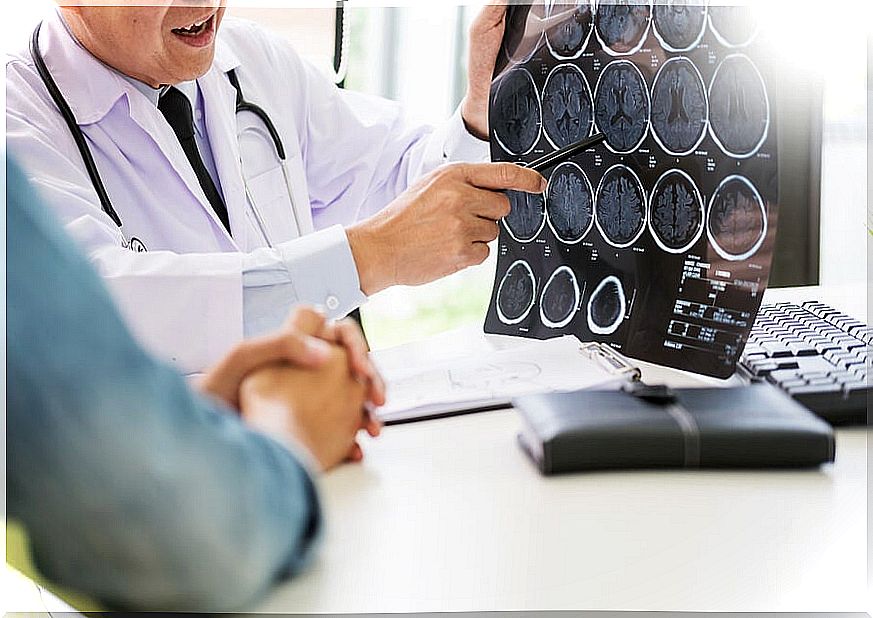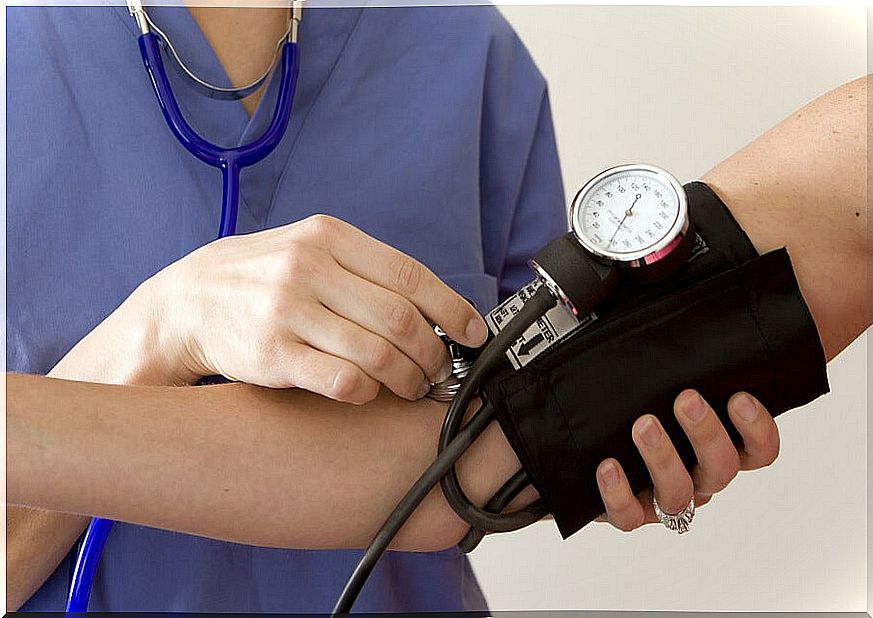8 Warnings Of A Stroke
Although a stroke can happen suddenly, there are some warning signs that can manifest before suffering it. In this article we detail what each one is about.

A cerebral infarction is a cerebrovascular event that is caused by a failure in the blood supply, in which the blood stops reaching the brain. Because of this, the brain stops receiving oxygen and essential nutrients, and its cells can be damaged or die.
Although symptoms tend to appear suddenly, in some cases patients perceive that something is wrong and decide to seek medical attention. What are the main warning signs?
Warnings of a cerebral infarction
This event, like other diseases of the cardiovascular system, is difficult to detect in a timely manner and is often confused with symptoms of other more common conditions.
Therefore, knowing in advance the warning signs of cerebral infarction increases the chances of detecting it in time, without suffering serious sequelae. Next, we detail what they are.
1. High blood pressure
One of the first warnings of a stroke is an increase in blood pressure. However, people with high blood pressure do not usually feel strong symptoms that alert them to the danger they are in.
According to the American Heart Association , high blood pressure tends to damage or narrow blood vessels in the brain, leading to breakage or loss of blood. This puts the brain at higher risk of having a stroke.
Therefore, it is important to undergo regular medical check-ups, especially when significant risk factors like this are present.

2. Stiff neck
Stiff neck can be caused by times of stress, poor posture, or muscle overexertion. However, the possibility that it is due to blockage or bleeding in one of the blood vessels should not be ruled out .
A publication from Harvard Medical School suggests that, although not very common, neck pain and stiffness can be one of the warning signs of a stroke, in people under 50 years of age.
If you can’t touch your chest with your chin and you feel the pain spreading to your head, see your doctor immediately.
3. Strong headache
Another warning of a stroke can be a headache. This is a common symptom that manifests itself from multiple causes, almost always without representing something serious.
However, when it occurs severely and without an apparent cause, it is advisable to see a doctor, since intense and throbbing headaches usually alert to an increase in blood pressure.

4. Paralysis on one side of the body
This condition, also known as hypoglycemic paralysis, is a common symptom among those who are going to suffer a stroke.
In this regard, a Mayo Clinic publication points out that paralysis or numbness of the face, arm or leg is one of the most common symptoms of a stroke and often only affects one side of the body.
Although most of the time it is not easy to diagnose, this red flag should not be ignored under any circumstances.
5. Visual problems
A person who has no visual problems but suddenly has cloudy or diminished vision should see their doctor. Although this symptom can be caused by various health problems, it should not be ruled out that it may be due to a stroke.
6. Sudden fatigue
Losing energy suddenly and for no apparent reason should always be a reason to turn on the red flags. Fatigue is a common symptom of some health problems, especially when something interrupts the proper oxygenation of the brain.
Dr. Pooja Khatri, a professor of neurology at the University of Cincinnati , in a publication from the American Heart Association , points out that you have to pay special attention to sudden fatigue and weakness throughout the body.
This is because these can be mistaken for symptoms of other conditions when, in fact, they are a sign of a stroke.

7. Difficulty walking and moving arms
Having difficulty coordinating limb movements should be interpreted as a possible warning sign of this problem. Although it does not happen in all cases, it sometimes shows up just before the attack.
On the other hand, severe and abnormal pain in the extremities is more than enough reason to seek medical help.
8. Vertigo and dizziness
These are symptoms of many health problems and, although they are a reason for medical consultation, they almost never represent something serious. However, they must be cared for and evaluated, especially when the person has some type of cardiovascular problem.
According to a systematic review published in Neurology , vertigo and dizziness are common manifestations of stroke. They generally occur recurrently in women.
Some risk factors
In addition to recognizing the symptoms, it is important to know what the risk factors are. According to a publication of the American Association of Neurological Surgeons , although there are factors that cannot be controlled, such as age and the hereditary component, there are others that, by modifying certain habits, could prevent this event. These are as follows:
- Cigarette smoking
- High blood pressure.
- Carotid or other artery disease.
- History of transient ischemic attacks.
- Diabetes.
- High cholesterol.
- Obesity and sedentary lifestyle.
Although it is not easy to detect a stroke in time, it is advisable to recognize the possible symptoms that appear before it happens. Heeding these signs and seeking immediate medical help is key to avoiding fatal consequences.









